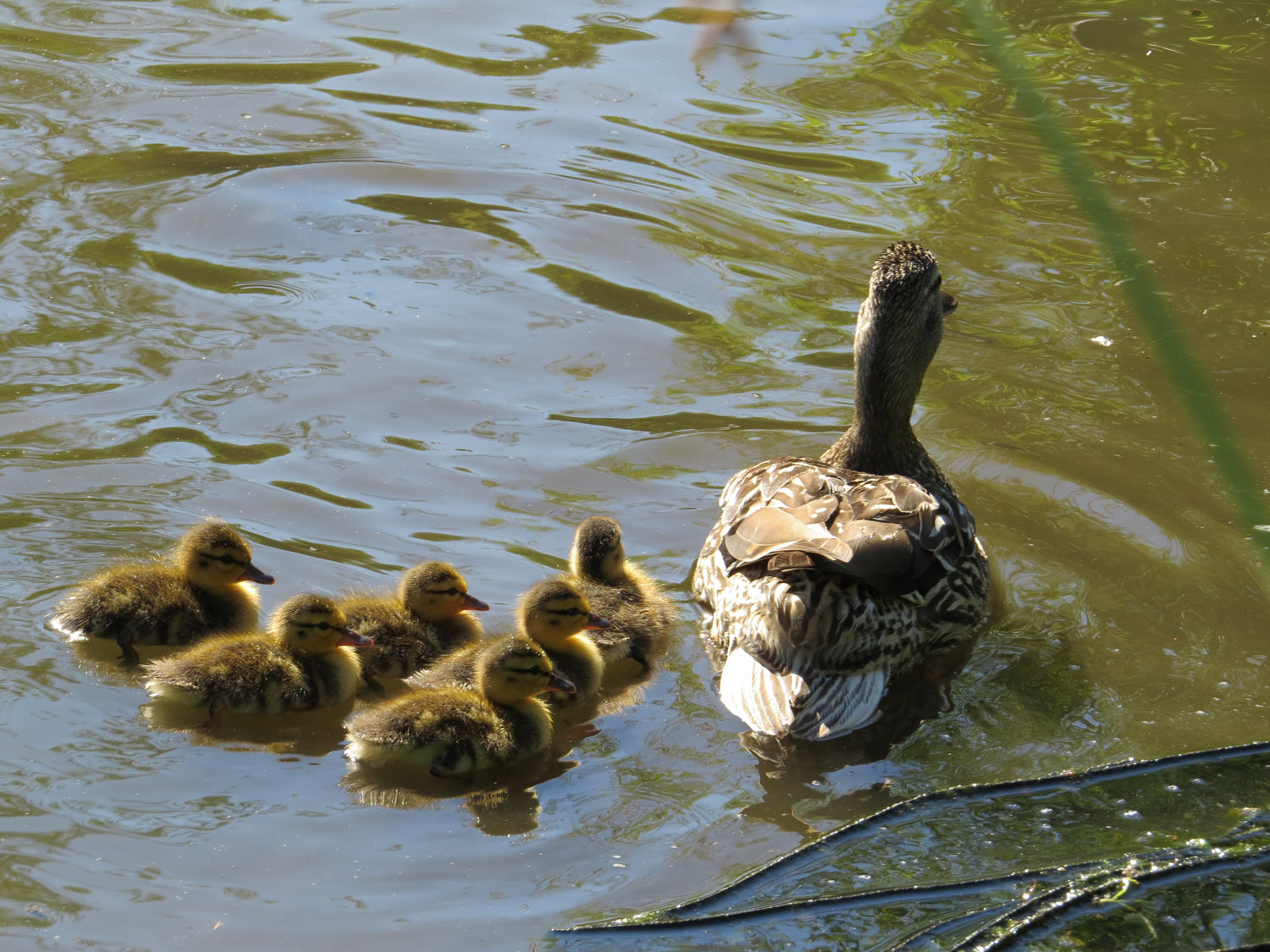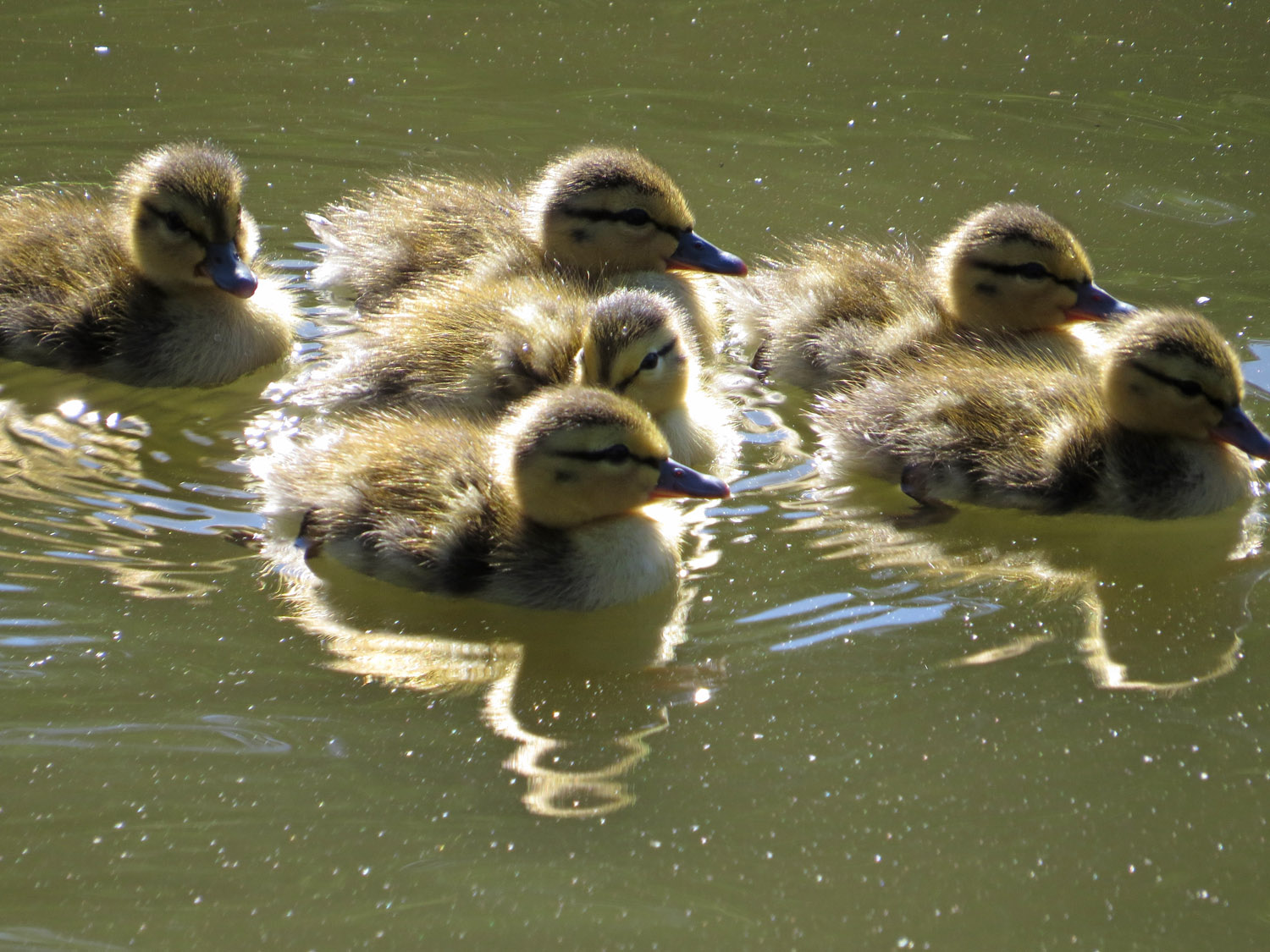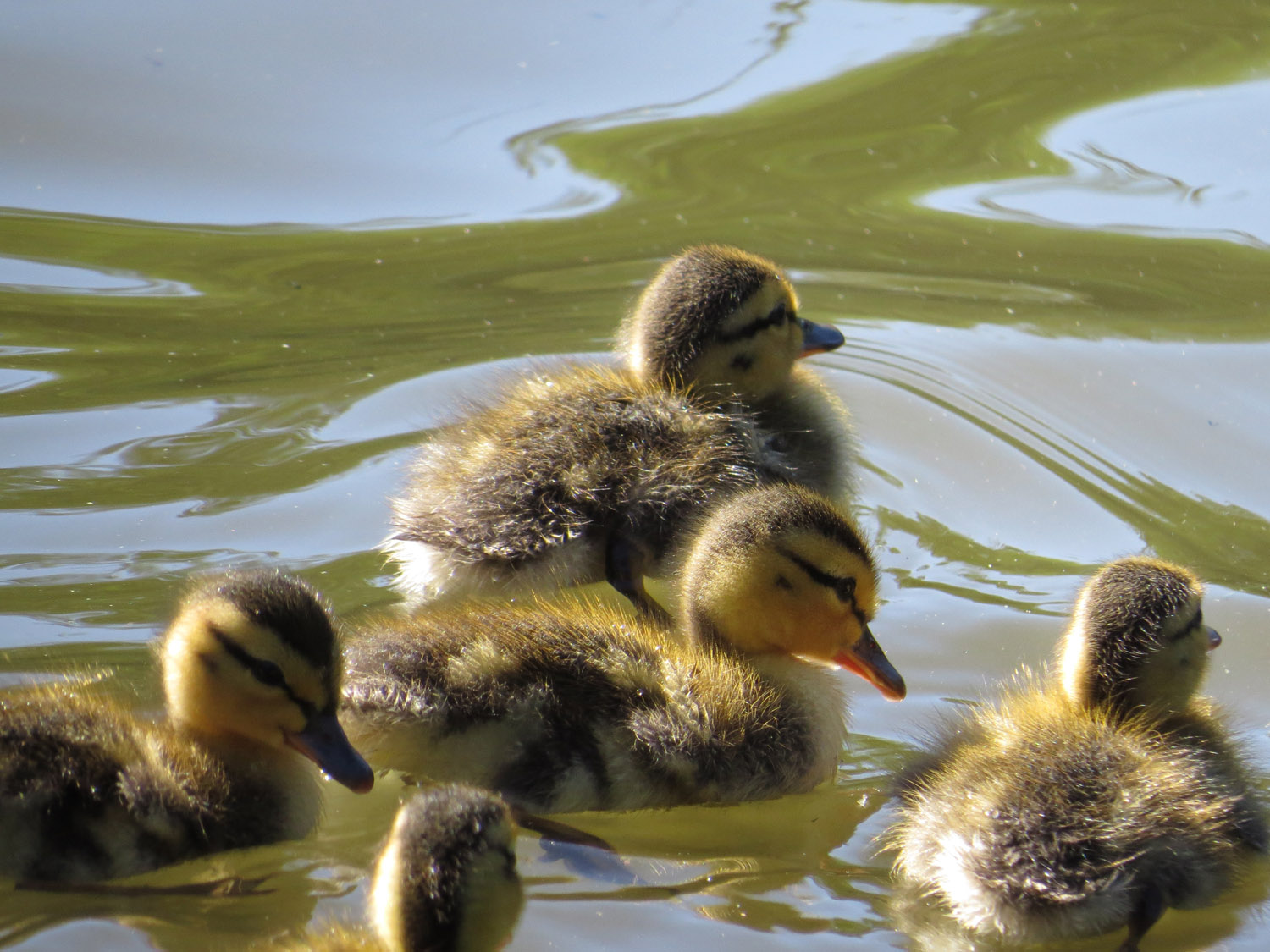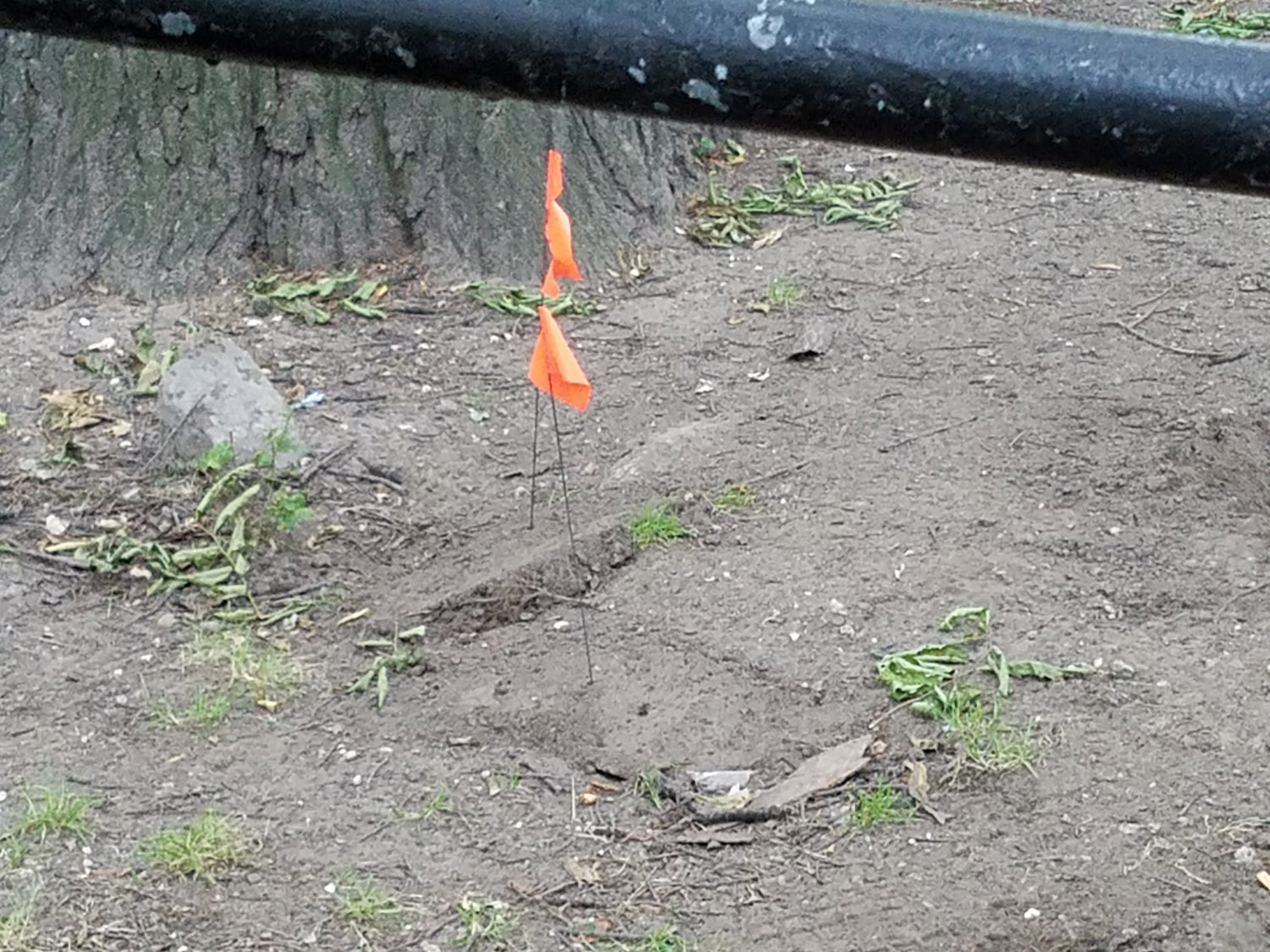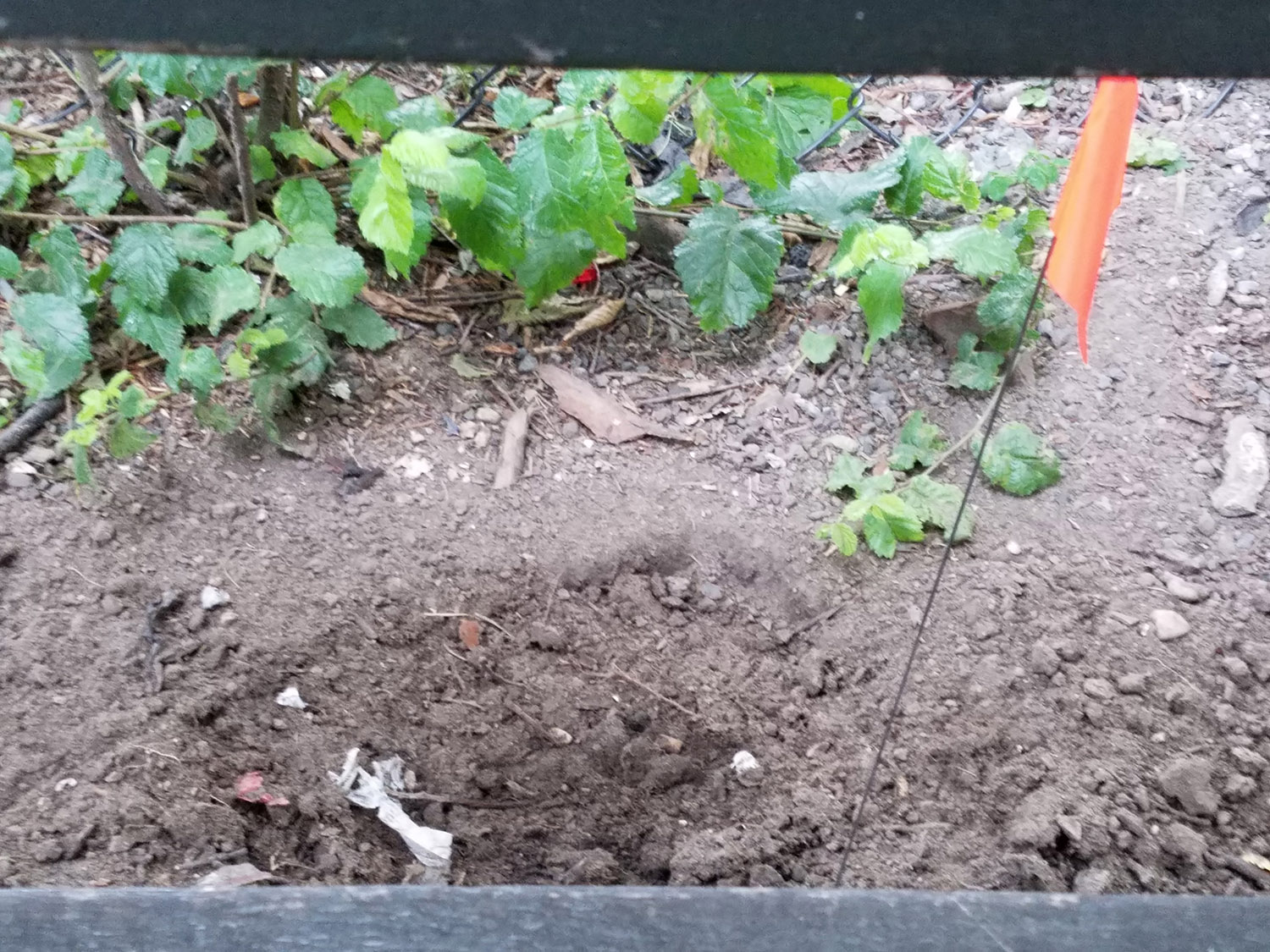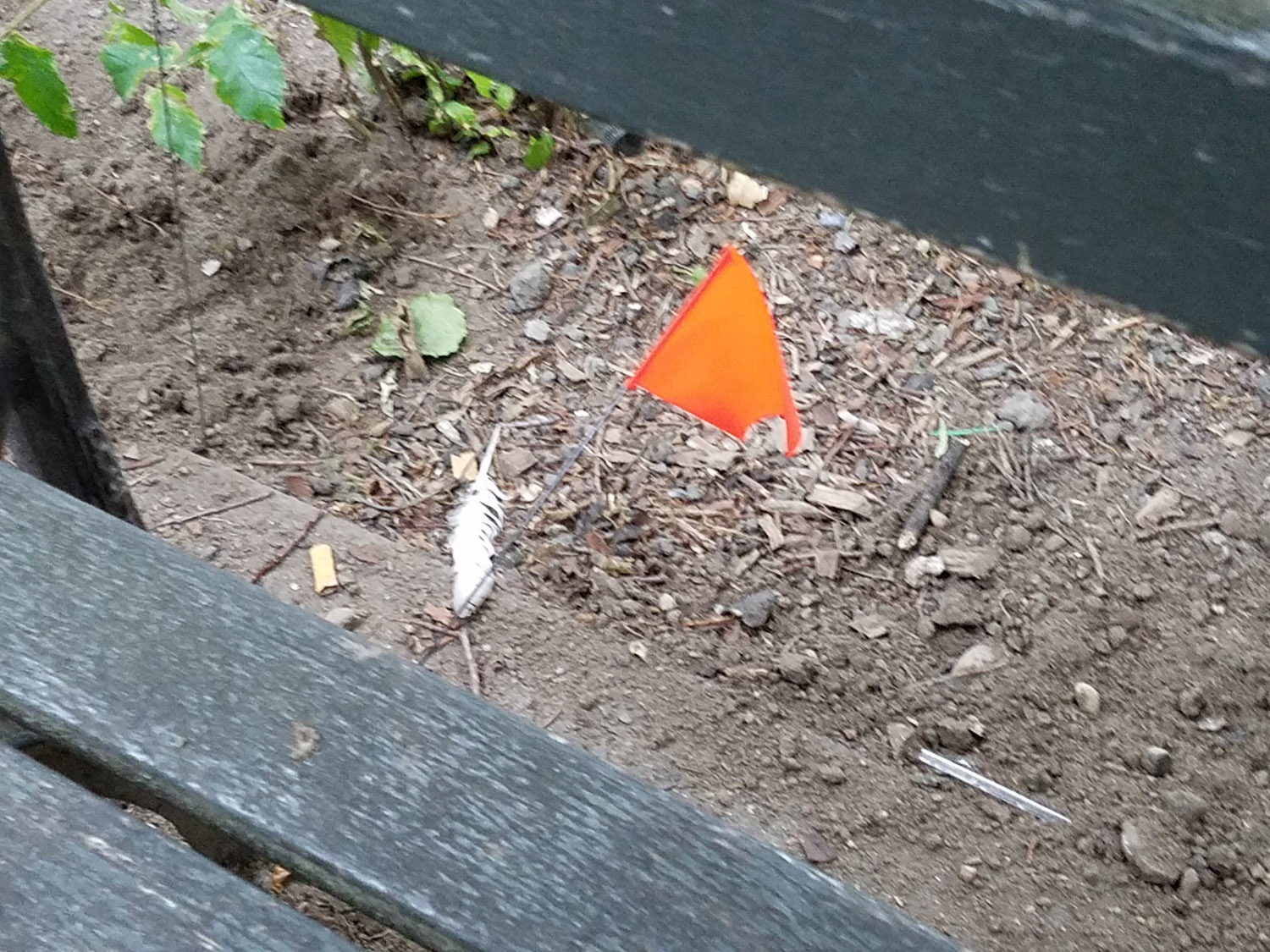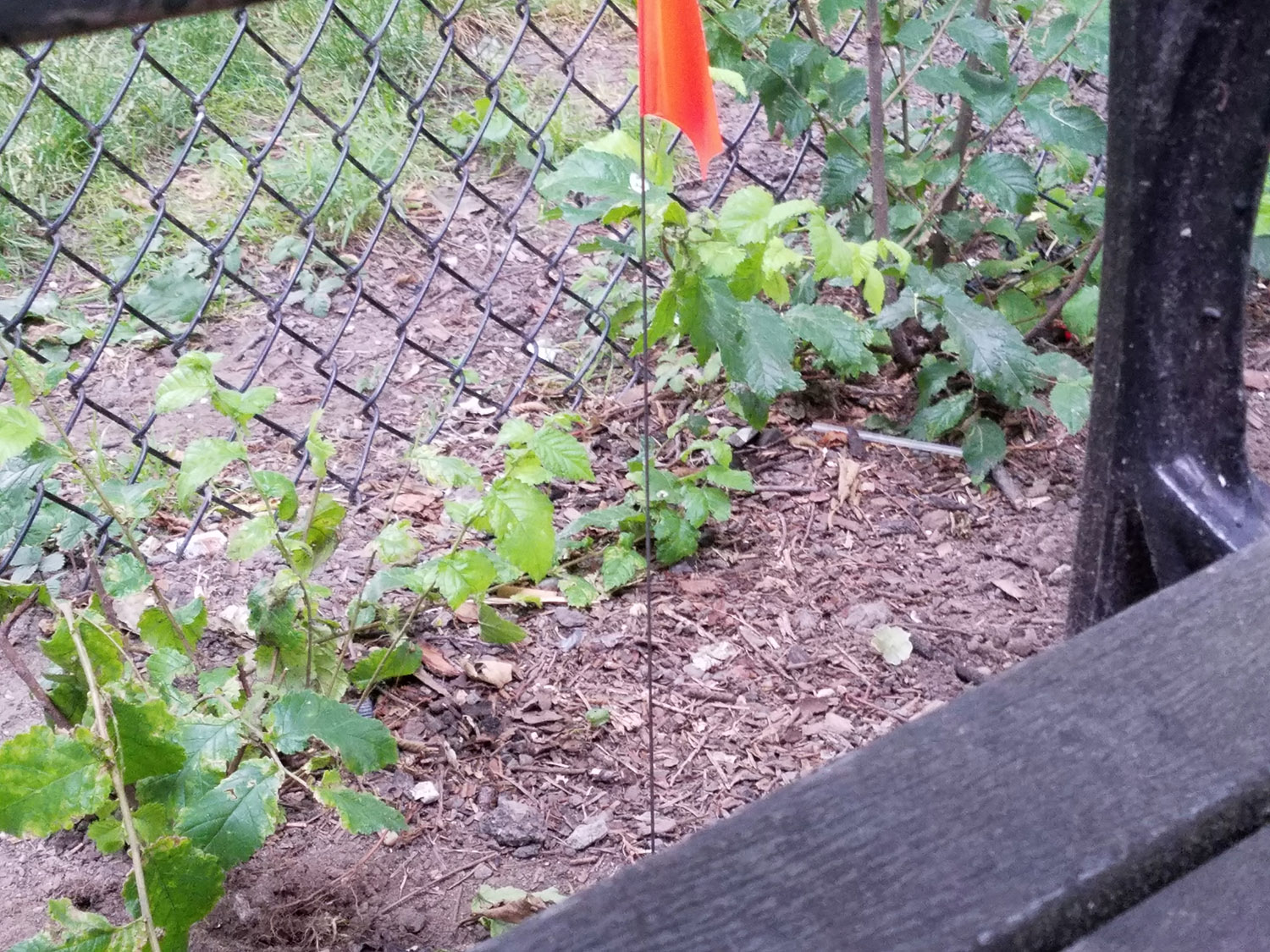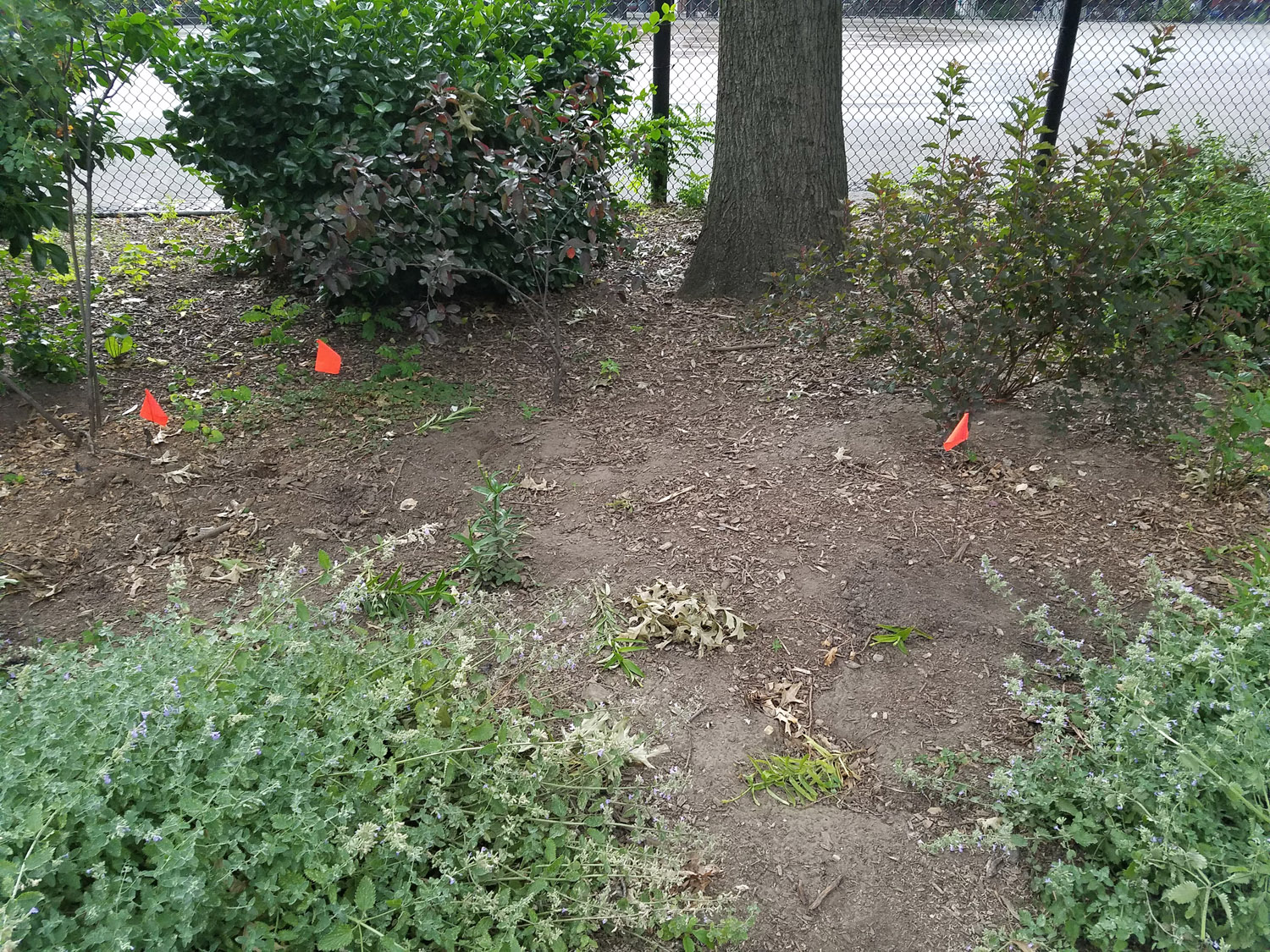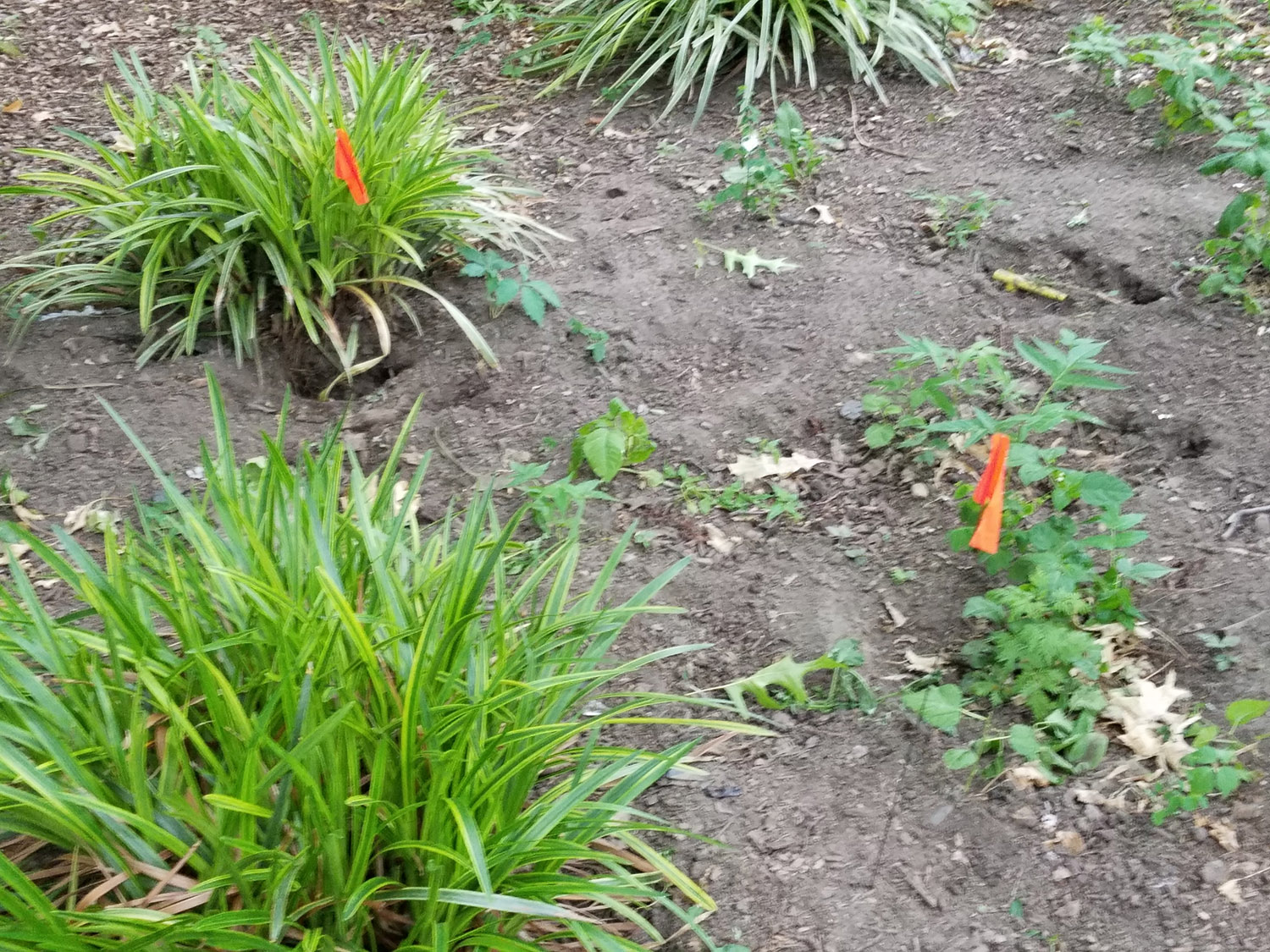Updated July 5, 2016
Rats! Did I See What I Saw?
I published an entry very early on July 2 taking the New York City Parks Department to task for allowing rodenticide use in Tompkins Square Park. Rat poison could be lethal to the five red-tailed hawks that now hunt in the park. Rat poison can kill the rats, but it also can kill any animals that eat the poison or eat the rats that have ingested the poison.
I spoke later on Saturday, July 2, with Terese Flores, the park manager of Tompkins Square Park. I told her what I had seen (described below), and why I feared the use of rat poison, since the buckets had had "Rat Pellets" printed on them. She told me that what I had seen was city Department of Health workers pouring dry ice pellets into the bucket, which would then be forced into the rat holes. Ms. Flores informed me in an e-mail on July 4 (thank you for working on the holiday!), "The dry ice kills the rats in their holes so the hawks are not exposed to any poison." She also noted that she had provided the Health Department staff with buckets that do not have the label, so there should be no more confusion.
So I am happy to report that there are quite a few on "rat patrol" in Tompkins Square Park: the five hawks, the Department of Health, and a very caring and concerned park manager. My deepest gratitude!
Following is what I saw on July 1, followed by some discussion of hawks and rodenticide. I truly hope the dry ice works in Tompkins Square Park and its use can be expanded to other areas where hawks might hunt the rats. (I haven't found much good research on this method posted online — a quick Google search — but I did post a link at the end of this entry to one article.)
THURSDAY, JULY 1. TOMPKINS SQUARE PARK IN THE EAST VILLAGE IN MANHATTAN.
When I first arrived in the park to look for the three red-tailed hawk babies and their parents, Dora and Christo, I walked by the garden area across from the bathrooms on the north side. There I saw red flags placed near rat holes.
After watching the hawks for a while, I went to get pizza on Avenue A (yes, there is still really good dollar pizza left in Manhattan). When I returned through the southwest corner of the park, I saw three men at the bench pictured below, one in front and two behind the fence. All three were wearing black shirts with a logo on them — while I couldn't read the logo, I did note that it was not the logo of the New York City Parks Department (the leaf logo).
One of the workers was scooping a small container of pellets out of a large cooler that was emitting vapor from dry ice and transferring them into a bucket that was also on the bench. The bucket had "Rat Pellets" printed on the side.
It is my understanding that the Parks Department avoids using rat poison in the parks during the hawks' nesting season, which runs from February through August. (See Adored Manhattan Hawk Dies After Ingesting Rat Poison, Renewing Calls for City to Change Approach to Rodent Control, The Daily News, April 14, 2016.)
I went back to the east side of the park to watch the hawks, but I sent a message to a dedicated park ranger I know advising him that I had seen what looked like poison being put in the park. He asked me to send him photos. When I returned to the site a little later (I was delayed by very active and photogenic hawks), the workers were no longer there. I walked around, but couldn't find them again. I took the photo below to show what I could still see.










